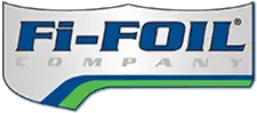Reflective Insulation
Use this 3-part specification template to specify reflective insulation for thermal control in exterior building envelopes by Fi-Foil Company.
Reflective insulation is a remarkable technological advancement in the field of building insulation. It offers numerous benefits, such as enhanced energy efficiency and improved indoor comfort.
What is Reflective Insulation?
A type of insulation material that incorporates a highly reflective surface to control heat transfer. It typically consists of a layer of aluminum foil or metalized film that reflects radiant heat. The reflective surface works by minimizing the amount of radiant energy absorbed by the building envelope, thereby reducing heat gain during hot weather and heat loss during cold weather.
How Does It Work?
Works on the principle of reflecting radiant heat rather than resisting it like traditional insulation materials such as fiberglass or foam. Radiant heat transfer occurs when heat waves move directly from a warm surface to a cooler surface. Reflective insulation prevents this transfer by reflecting the heat back towards its source.
The radiant barrier created by reflective insulation is effective in reducing heat gain in the summer. When sunlight strikes the roof, the reflective surface reflects a significant portion of the radiant heat back into the atmosphere, preventing it from penetrating the building. In the winter, the same principle applies, but in reverse. The reflective insulation helps to retain the heat generated inside the building, reducing heat loss through the walls or roof.
Benefits of Reflective Insulation
- Enhanced Energy Efficiency: Insulation helps reduce the need for excessive cooling or heating, resulting in lower energy consumption and reduced utility bills. By minimizing heat gain and loss, it enables HVAC systems to work more efficiently, reducing their load and extending their lifespan.
- Improved Indoor Comfort: By reducing heat transfer through the building envelope, reflective insulation helps maintain a more consistent indoor temperature. This leads to a more comfortable living or working environment throughout the year, regardless of external weather conditions.
- Environmentally Friendly: Reflective insulation promotes sustainable living by reducing energy consumption and carbon footprint. It enables homeowners and businesses to adopt greener practices and contribute to the conservation of natural resources.
Applications
- Residential Buildings: Reflective insulation is commonly used in residential properties for roofs, attics, walls, and crawl spaces to improve energy efficiency and comfort.
- Commercial Buildings: Reflective insulation is widely utilized in commercial structures like warehouses, factories, and offices to reduce heat gain and improve energy efficiency.
- Agricultural Structures: Farms, barns, and agricultural buildings can benefit from reflective insulation to create a more stable and controlled environment for livestock and crops.
Considerations and Installation
When considering reflective insulation, it’s important to understand that it works best in combination with traditional insulation materials. The reflective surface complements the other insulating materials by reducing radiant heat transfer.
Installation of reflective insulation requires careful attention to ensure maximum effectiveness. Proper sealing, overlapping, and covering of joints and seams are vital to creating an airtight barrier. It’s recommended to consult professionals or follow manufacturer guidelines for correct installation techniques.
For assistance in the use of products in this section, contact Fi-Foil by calling 800-448-3401 or visit their website at www.fifoil.com
